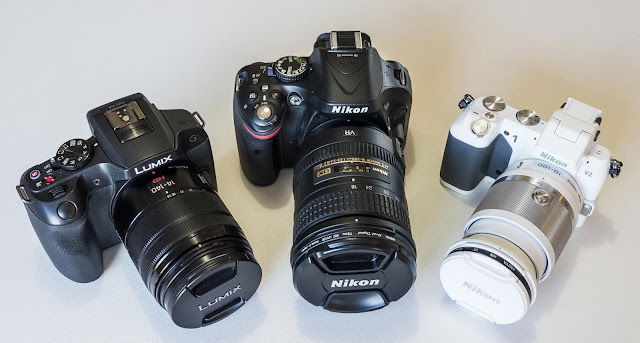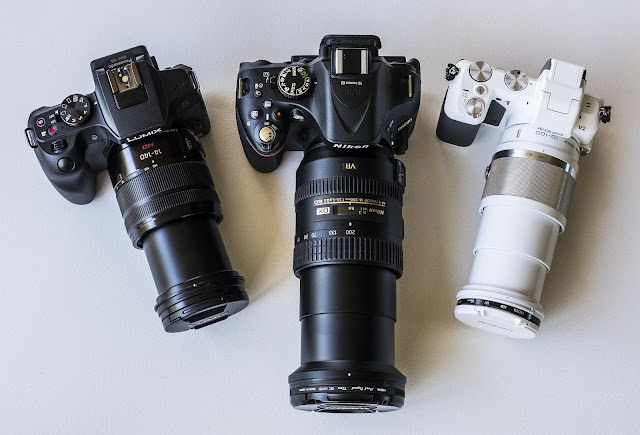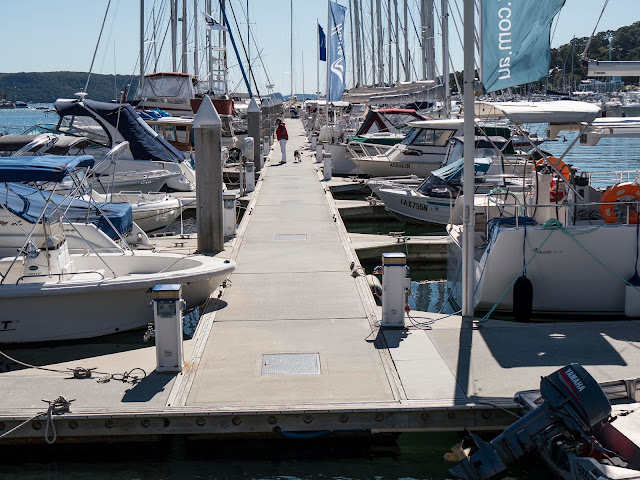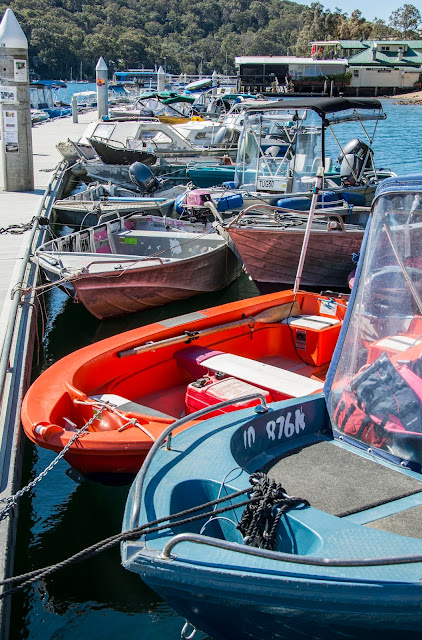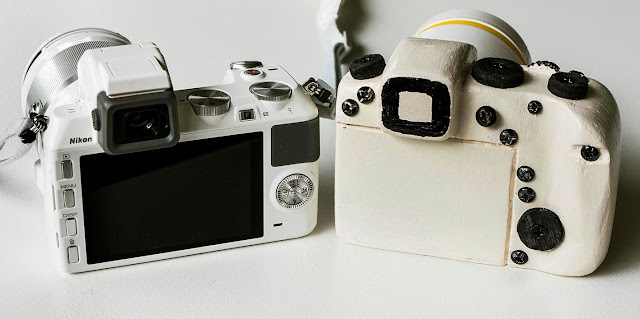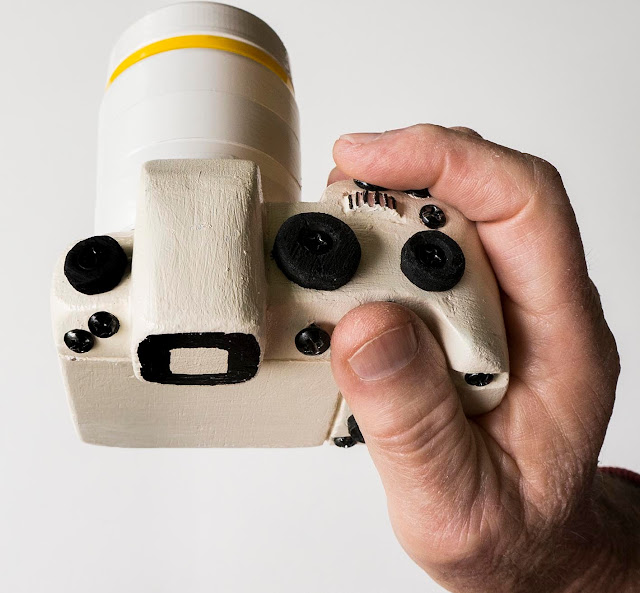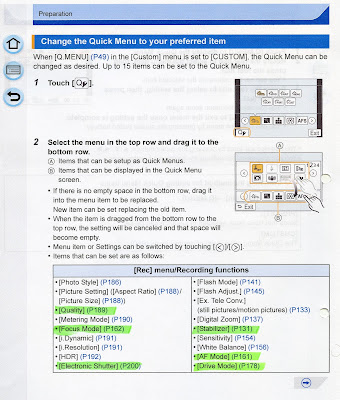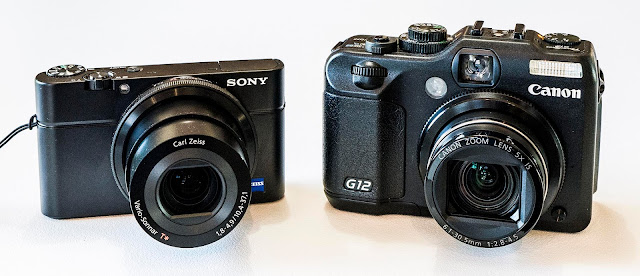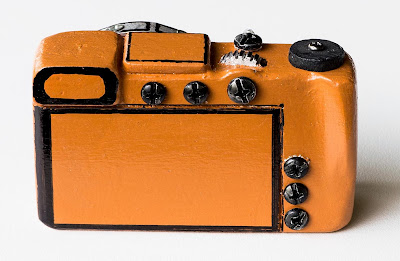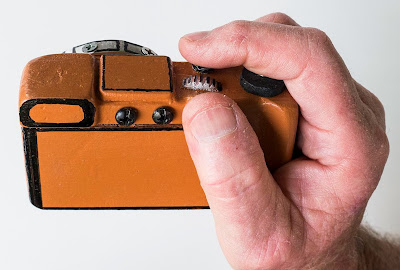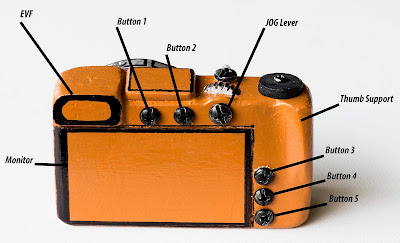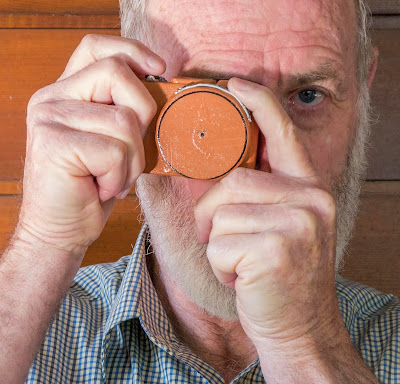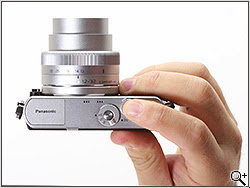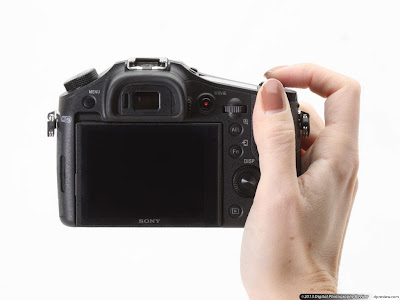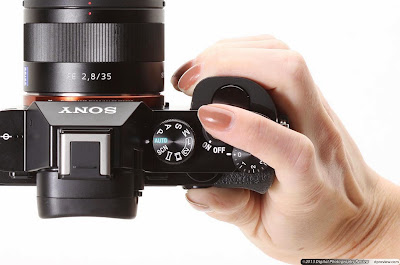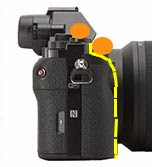Part 1, Main Menus: Setup, Custom, Recording
Introduction Current model Panasonic Lumix G Micro Four Thirds cameras, including the G6, have a very sophisticated user interface. With all menu and Fn buttons at default settings and the [iA] button active, they operate as high functioning point and shoot cameras, suitable for beginners or snapshooters. With one of the P,A,S,M modes engaged they become highly configurable. This means the user interface can be tailored to the preference of each individual user. This is a wonderful thing but the ability to allocate user preferred functions to camera control modules requires considerable understanding by the user as to how best to select from the many options available.
This two part article is an attempt to help G6 users grapple with the task.
Declaration about touch screen operation I never use touch screen operation on a camera and have posted my reasons for this
here. Many of the instructions in the Owners Manual refer to touch screen operation but all actions can be done with the hard controls. For this two part article on setting up the G6 I will assume direct control of all actions in all phases of use, using the buttons and
dials. If you prefer to use touch screen operation that's fine,
the Menu, Q Menu and Fn buttons all perform the same tasks. In fact you get two extra Fn (soft, on screen) buttons.
Likes and Preferences over time On many cameras even today, the function of all camera control modules is set by the manufacturer. Some offer user selectable tasking for one button. On the G6, Panasonic offers user tasking for 9 control modules. This requires a decision process as to how best to exercise that choice. With experience it is highly likely that those choices will change over time.
Prescription-vs-Dialectic Each individual will have a different idea about their preferred way of interacting with a camera's controls. So the content of this two part article will be dialectical in nature, designed to help the reader make his or her own choices.
Main Menus I exhort the reader to download and print the entire 355 page Owners Manual from any Panasonic website. Panasonic's camera manuals have been improving over the last few years. The G6 Manual is very long and packed with information like a textbook. But it is reasonably well organised, well written and comprehensive. I sometimes read reports by gung-ho camera reviewers that they managed to figure out how to use a new camera without reading the Manual, as if it were some kind of macho status symbol to do so. However I defy anybody to fully comprehend all the functions of the G6 without reading the Manual.
Page numbers in square brackets refer to the Owner's Manual.
Setup Menu[P 328-329] Most of the items are well described in the Manual, but I make just a few comments about some.
Monitor/Viewfinder Display If you look at the Monitor, that will be adjusted. To adjust the EVF, look through it while making adjustments. Monitor and EVF are adjustable for brightness, contrast/saturation and color balance. Increasing contrast also increases saturation. Each individual will have different color perception and preference for contrast/brightness. My own experience is that it takes me several weeks of experiment with these adjustments until they are to my satisfaction.
Menu Resume I always set this On, so the highlighted item in each Menu will be the one I last used. This speeds up access to the most commonly used item. Unfortunately the G6 lacks a [My Menu] however the very good Q Menu largely supplants the function of a My Menu on other cameras.
Custom Menu [P 326-328] I make no comment about items which I think are well described in the Manual. I state my own preference with reasons in several places. Your own practice may differ.
Cust.Set.Mem. The procedure for allocating a Custom Setting to one of the C1,C2 positions on the Mode Dial is well described from page 129 in the Manual. If you move the dial to C2 a submenu can be displayed giving C2-1, C2-2, C2-3. Be aware that a Custom Mode locks in all the menu, button, lever and Mode Dial settings in place at the time the Custom Mode is set.
AF/AE Lock You might want to experiment with this one. There are 4 options, AE Lock, AF Lock, AE+AF Lock and AF-ON. Your choice will depend on the way you expect a camera to operate. I set AF-ON. This enables back button focussing like a high end DSLR. In AFS focus is acquired and locked separately from AE. In AFC pressing the button starts and continues AFC. You can set focus running with the back button then fire the shutter with the shutter release button when you are ready.
Shutter AF The default and standard practice is to set this ON. You might conceivably set this OFF if the AEL/AFL button is set to AF-ON. Then you would have AF only on the AEL/AFL button. I like to have the option to activate AF with either button.
Quick AF and Eye Sensor AF These are both settings designed to bring the image into focus before you press the shutter button. Some people may find this to their liking. Others might like to feel more in control of when and where the camera finds focus.
Pinpoint AF time I suggest you experiment with this. The best time would depend on what type of subject you prefer. For instance "small bird in tree" would suggest a brief time so the photo can be made before said bird flies away.
AF Assist Lamp Low light AF in the G6 and other recent Lumix G cameras is so good that the AF assist light is really not needed. In addition it is very distracting for live subjects. I leave it OFF.
Direct Focus Area You need to exercise considerable thought about this feature and will possibly change the setting after gaining experience with the camera. Note that the G6 and some other Lumix cameras have a feature called "Touch Pad". This is a method of changing position of the AF Area by touch screen control while viewing through the EVF. You have to insert a thumb or finger between the face/nose and screen. I tried this and found it unworkable. Other reviewers have reported more positively about the feature. Give it a try.
Back to the hard controls, you can use the Cursor Buttons (a.k.a. 4 Way Controller) for either Direct Focus Area or the default functions (ISO, WB, Drive Mode, AF Mode) It is either/or, not both. I will discuss the implications of this in Part 2 of this article, allocating tasks to the Fn buttons.
This is the most important decision which needs to be made in configuring the camera to personal preference.
AF+MF When set to ON this allows direct manual focus by rotating the focus ring on the lens while AF is active. It is a very useful pro style feature especially in situations where the AF system might have trouble reading your mind. I always set it ON.
MF Assist This sets the method by which the preview image is enlarged during MF assist. The options are Focus Ring, Left key of the 4 Way controller or both or none. The natural option seems to me to be the focus ring which works well. The amount of zoom is controlled with the rear dial. Managing shutter half press, focus ring and rear dial together requires some dexterity and practice. If Direct Focus Area is ON the left key option is not available.
MF Guide When ON, this displays an analogue bar with mountain symbol at one end and flower symbol at the other. It is useful for prompting the user which way to turn the focus ring. It would be a lot more useful if a focus distance could be preset manually by scale.
Peaking The G6 is the first Lumix M43 camera with peaking. I rate it genuinely useful so have this set to ON.
Histogram Here you set the histogram on or off. Cycle through display options with the Disp button to make it appear on screen or not. I have found the G6 and other Lumix cameras are programmed to select an exposure which reliably protects highlights so I have Histogram OFF. However other users say they value the feature for fine exposure control.
Guideline You get a choice of none or three types of guideline/grid. I find the simplest single vertical/single horizontal line the best, with both lines running through the frame center. This is very useful for making sure vertical lines in the subject are vertical in the frame center.
Highlight When ON, this activates the "blinkies" on overexposed highlights when seen in image review. It is definitely useful.
Expo.Meter When ON, this clutters up image preview with a shutter speed/aperture relationship display. The idea seems to be to provide a graphical representation of the change in aperture which accompanies a change in shutter speed or vice versa. It might have some value as a learning tool.
LVF Disp.Style/Monitor Disp.Style You can set both the EVF and Monitor to Viewfinder Style, with principal camera data displayed on a black strip below the image preview, or Monitor Style, with the data overlaid on the lower part of the image preview. I have a strong preference for Viewfinder Style as the camera data are always easy to read in any conditions of subject or light. but others may prefer the Monitor Style. Either way you have the option to set both up to have the same appearance for a seamless transition from eye level viewing to monitor viewing.
Auto Review Beginners and snapshooters seem to like to review their images just after capture, thereby confirming, I suppose, that yes it is a camera and yes, it made a picture. But auto review slows down the shot to shot rate so more experienced photographers switch it off.
Fn Button Set See Part 2 of this article.
Function Lever This determines the function of the lever behind the shutter button. You have Auto, Zoom or Exp. The idea is that with a power zoom lens mounted you can zoom with this lever, so you don't have to find the zoom lever on the lens. With most lenses the Function Lever can be set to adjust exposure compensation directly. A bit too directly sometimes as the lever is fairly easy to bump accidentally.
Q Menu See Part 2.
iA Button Switch Set to operate by short press or long press. The long press prevents it from being bumped accidentally.
Eye Sensor Set this to Auto ON, sensitivity Low.
Self timer Auto Off Some cameras auto cancel self timer after every shot, which can be really irritating. The G6 allows you to set self timer auto off at camera shutdown or retain self timer ON even when the camera is switched off.
Shoot W/O Lens I always set this ON so I can check shutter operation without a lens mounted.
Recording [Rec] Menu [P 322-324] Several of the options in the Rec. Menu are items which you will want to allocate to a Fn button or the Q Menu. If so, the items remain available in the Rec. menu. If an item is changed in, say the Q Menu, that change will also appear in the Main Menu.
Photo Style This applies to JPG images. So if you want to shoot JPGs and have them just as you like straight out of the camera, this is the place to experiment with the many options available.
Aspect Ratio The G6 has the same basic sensor as the GH2 but without the multi aspect ratio capability. So any aspect ratio other than 4:3 is a crop, with less than 16 Mpx.
Picture Size There may be occasion for using less than the full 16 Mpx, perhaps if if the image(s) are destined for the internet. But you can always dowsize a 16 Mpx image. The reverse is not possible.
Quality This is where you select RAW/JPG or RAW + JPG and the compression level for JPGs. This is one for the Q Menu.
Focus Mode Here you select from AF single, AF continuous or an Auto style, AFF Mode, or Manual Focus. This is one for a Fn button or the Q Menu.
Metering Mode Select from Multiple, Center Weighted or Spot. Multiple is very reliable and recommended for all general photography. You would want a specific reason to use one of the other Modes. I select Multiple and leave it that way all the time.
Burst Rate [P 179] Here you select which rate will be used when Burst is selected in the Drive Mode. There are 4 options. Note that the frames per second rates given by Panasonic are for guidance. The actual rate is dependent on the lens and subject/light level.
SH, super high (40fps) is JPG only, no live view (image preview in the EVF or monitor is only available for the first shot of the sequence) AF only on the first frame, focus is locked for the remainder of frames of the sequence.
H, High (7fps) RAW is enabled, AF and live view on each frame are not possible.
M, Medium (4fps) At this speed RAW, Live View and AFC are enabled on every frame. This is the most useful setting for photographing subjects moving towards or away from the camera.
L, Low (2fps) This works like M but slower. It is quite useful for slowly moving subjects.
Auto Bracket Here you preset the auto bracketing sequence which will operate when the Drive Mode is set to auto bracketing. There are several options to navigate.
Single/Burst. Single means you have to press the shutter release button for each shot in the sequence separately. I can't think of a reason you would want to do this, but there it is.
Burst means the camera will quickly make all the shots in the pre set sequence with one long press of the shutter release button. Unfortunately the camera does not have the option to make the whole sequence with one short press of the shutter. Neither does it allow AEB to be linked with the Timer Delay. AEB and Timer are either/or options on the Drive Mode. I personally find this disappointing because it means you have to find some means to drive the camera remotely or risk camera shake and/or misalignment of the frames when using AEB. The camera can be driven via smart phone and Wi-Fi or wired cable release.
Step allows 3, 5 or 7 shots with 1/3, 2/3 or 1 stop increments. Lots of choice here.
Sequence allows you to set under/normal/over or normal/under/over.
Self Timer This is the place to pre set self timer options. Switching the self timer on or off is done via the Drive Mode. There are three options:
Single picture after 10 seconds delay.
Three pictures at 2 second interval after 10 seconds delay. This is the one for including yourself in the family/work group annual photo.
One picture after 2 seconds delay. This is the usual choice with camera on tripod when you don't have or don't want to use remote control.
iDynamic/iResolution These are options for JPG shooting. iDynamic tries to increase dynamic range by underexposing slightly then applying a tone correction curve to the dark and mid tones. On my tests it works and provides a small benefit. I also tested iResolution and could not convince myself it achieved anything that I could determine.
HDR [P 192] Another JPG only function. If you want to use HDR it can be allocated to the Q Menu so you don't have to trawl through the Rec. Menu to find it. The camera should be on a tripod for this. HDR can be combined with Timer Delay for hands off shutter activation.
Set allows you to choose the number of exposure steps between each of the three exposures.
On/Off are self explanatory.
When the shutter button is pressed the camera makes three exposures in quick succession and combines them in camera for greater highlight and shadow detail than would be possible with one exposure. It works.
Multi Exp. [P 193-194] I have to confess that despite fiddling around with this option for a while I still don't quite grasp how it works. The idea is to combine several exposures into one composite image. The procedure appears to do this and maybe someone can discover a purpose in doing so.
Time Lapse Shot [P 195] This does work and I can see how it could be useful in several situations. I got the function working if the first photo of the sequence is set for Now, but failed to work out how to set the first shot of the sequence to be made some time after setting the process into action. You might want to experiment with this.
Panorama Settings I experimented with the in camera auto panorama function on this camera and found it wanting. In particular the final image often contained double imaging indicating inaccurate merging. I think Panasonic needs to do some more R&D on this feature. Other manufacturers manage to get it right.
Electronic Shutter This is a very useful and important feature on recent Lumix M43 cameras. The E-Shutter eliminates Shutter Shock, about which I have written in detail elsewhere on this blog. It also allows silent operation if beeps and E-Shutter sounds are switched off in the Setup Menu. E-Shutter is one to allocate to a Fn button for ready access.
Flash [P 139-148] (Not available with E-Shutter) The built in unit is very useful for filling shadows of backlit subjects or providing a small boost to low available light. The built in flash can also be used as a wireless commander for up to three off camera units (FL-360L) The Manual provides extensive detailed instructions for use.
ISO Limit Set I generally just set 12,800 as the limit and let the camera do it's thing. The limit is 1600 with E-Shutter.
ISO increments Apertures and shutter speeds are adjusted by 1/3 stop increments so it seems to me there is little point in making 1/3 stop increments for the ISO as well. Just having whole stop increments for ISO makes selection much faster.
Extended ISO This allows ISO to be set up to 25,600, which could be useful for small output sizes in extreme low light.
Long Shutter Noise Reduction This applies noise reduction to exposures of 2 seconds or more. It is probably worth setting ON although doing so doubles processing time for each exposure.
Shading Comp. This reduces, but may not eliminate, corner shading with RAW or JPG files. It requires the camera to perform extra processing on every image so it might slow shot to shot times and continuous frame rates.
Ex.Tele.Conv and Digital Zoom [P 134-137] These are JPG only Lumix features which provide two different approaches to digital zoom. They can be used with still photo or motion picture. It appears to me that perhaps Ex.Tele.Conv is better for still photo because it gives you full functional control of the AF area size and position. You might imagine that Digital Zoom would provide better image quality as it produces 16 Mpx files while those from Ex.Tele.Conv are only 8 or 4 Mpx. I investigated this and found that at the same effective crop amount and after bringing all three to the same output image size, I found no difference in quality between Ex.Tele.Conv, Digital Zoom and Cropped RAW files converted to JPG. So there is no free lunch. If you regularly shoot RAW, do that and crop later. If you want finished JPG files out of the camera try Ex.Tele.Conv for stills and Digital Zoom or Ex.Tele.Conv for motion picture.
Color Space Set this to Adobe RGB always, as you need Adobe RGB for RAW capture. If you use JPG capture the camera will automatically revert to sRGB for the JPG shots. I assume there is some reason the choice is provided but I can't think what that might be.
Stabiliser Some lenses have an OIS On/Off control on the lens barrel. With one of those lenses mounted this portal selects from Normal or Panning type OIS. With a kit type lens mounted, an On/Off option appears in the menu selection. This menu item should be allocated to the Q Menu for ready access.
Face Recog This is spook/spyware stuff. Beyond face detection we have face recognition. I haven't tried it. I perhaps naïvely imagine I might do a better job than the camera at detecting a specific person's face.
Next: Q Menu and Fn Buttons in Part 2 of this guide to setting up the Lumix G6.

